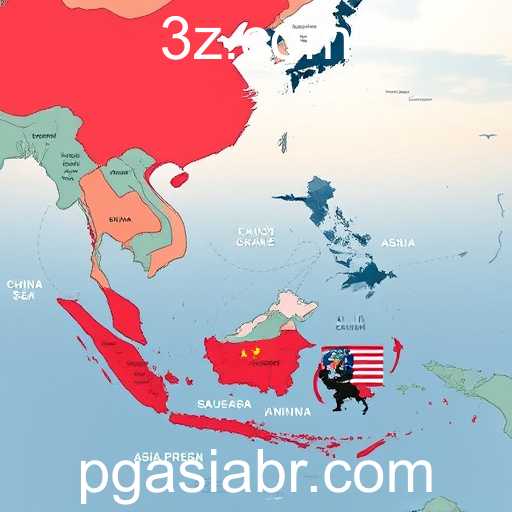Exploring the impact of escalating geostrategic dynamics in the Asia-Pacific region on global economic trends.
The Asia-Pacific region has long been recognized as a dynamic hub of economy and innovation, but recent geopolitical tensions have started casting a shadow over this global economic engine. As military posturing becomes a common feature across this geographic landscape, stakeholders worldwide are closely monitoring developments that may influence international trade and markets.
One of the most immediate concerns is the strained relations between China and neighboring countries due to territorial disputes and military developments. These developments have intensified following accusations of territorial intrusions and military skirmishes among countries in the South China Sea. In response, the United States, along with its allies, has increased its military presence in the region, sparking a broader discussion on international intervention and its potential economic reverberations.
Such tensions contribute to fluctuations in global markets, as investors weigh the risks associated with potential conflicts against the opportunities presented by the region’s growing economies. Business leaders and governments alike are scrutinizing these developments, understanding that political stability is crucial for economic certainty. As investors grapple with rising uncertainty, stock markets react accordingly, often experiencing volatility as international relations play out on the global stage.
Adding to the economic complexities are supply chain disruptions intensified by these geopolitical tensions. Trade routes essential for global supply have been directly affected, resulting in increased costs and delayed deliveries. With critical waterways such as the Taiwan Strait and South China Sea under constant scrutiny, businesses dependent on steady flow and low-cost operations are facing heightened risks.
The evolving dynamics of the Asia-Pacific region have, however, sparked a wave of regional diplomacy aimed at de-escalation. Countries within ASEAN and other international bodies are hosting multiple dialogues to foster stability and ensure cooperative economic progress. The push for a multilateral approach underlines the global recognition that any regional disturbance could ripple across continents, disrupting economic forecasts and affecting lives worldwide.
Meanwhile, the digital economy is observing a cautious expansion across the region. With Asia-Pacific leading in technology innovation and digital infrastructure, many countries strive to insulate the tech industry from negative geopolitical influences. As digital trade rises, businesses are navigating new regulatory landscapes designed to protect national security while fostering economic growth.
In conclusion, the Asia-Pacific region remains a pivotal player on the global stage, with its complex woven narrative of innovation and tension. Recognizing the interconnectedness of today's world, nations and businesses alike are closely watching the evolving picture, understanding that developments here could define economic patterns globally.




